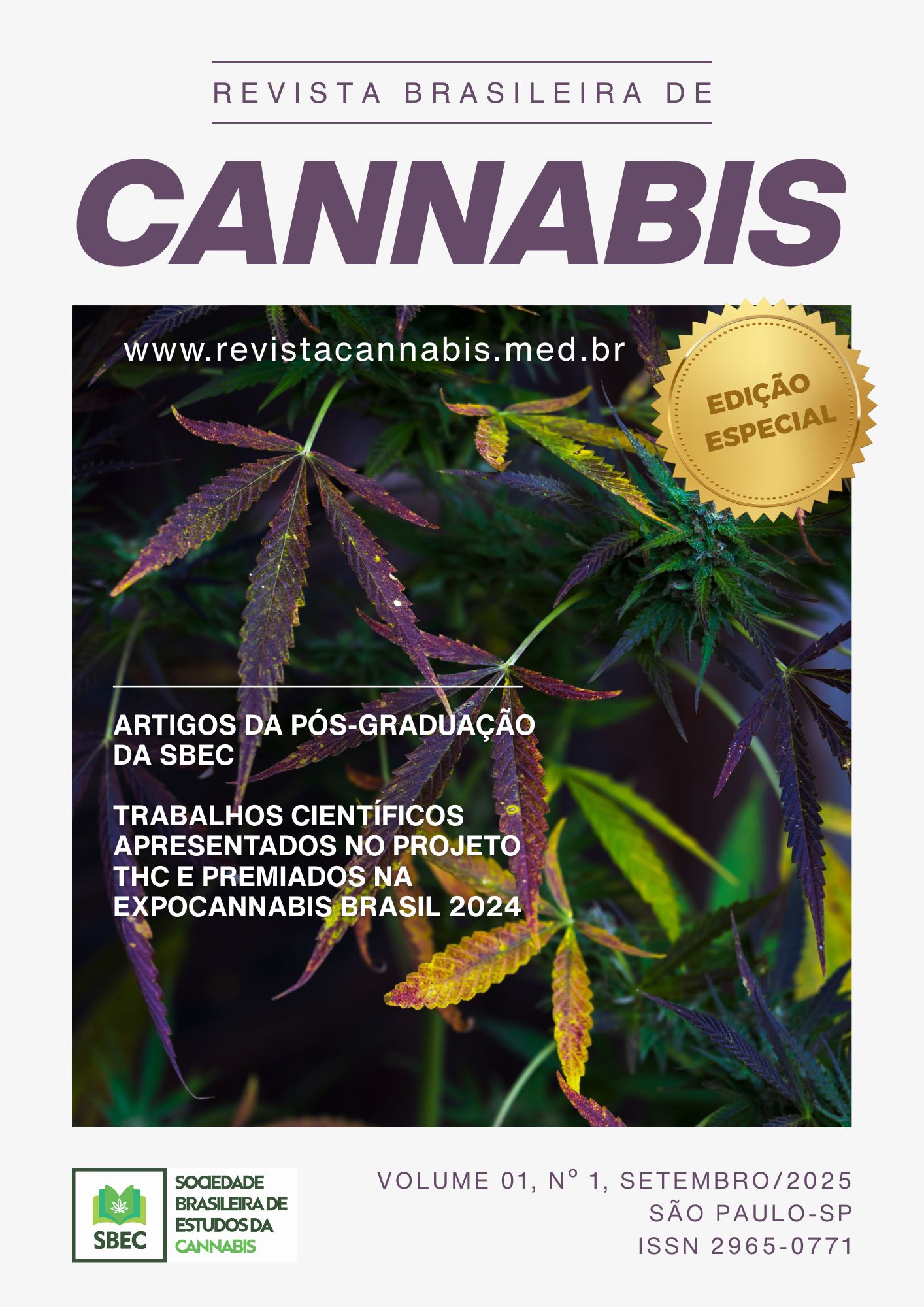O SISTEMA ENDOCANABINOIDE COMO UM ANARAQUISTA SILENCIOSO: UMA ABORDAGEM FISIOLÓGICA, FILOSÓFICA E TERAPÊUTICA
DOI:
https://doi.org/10.58731/2965-0771.2025.120Abstract
The Endocannabinoid System (ECS) emerges as a fundamental regulatory system, operating decentrally and autonomously, qualifying it as the "silent anarchist" of physiology. This article explores the metaphor of anarchism to unravel the uniqueness of the ECS in contrast to the body's hierarchical systems. We delve into its composition (cannabinoid receptors, endocannabinoids, and enzymes) and its role in homeostasis, highlighting how its plasticity and local responsiveness make it a model of molecular self-management. We discuss the therapeutic implications for integrative physiotherapy and the relevance of the endocannabinoid mesothelioma, an expanded network that reinforces the cooperative and adaptive nature of the ECS. The recent inclusion of Cannabis sativa in the Brazilian Pharmacopoeia underscores the growing clinical importance of this system, while robust evidence from randomized clinical trials demonstrates the efficacy of cannabinoid therapy in modulating endocannabinoid tone for the treatment of chronic pain.
Keywords: Endocannabinoid System; Cannabinoid Therapy; Anarchism; Homeostasis; Endocannabinoidome.
References
[1] LUPPI, M. M. et al. O sistema endocanabinoide: uma revisão. Revista Brasileira de Anestesiologia, v. 65, n. 3, p. 234-242, 2015.
[2] PERTWEE, R. G. Pharmacology of cannabinoid receptor ligands. Current Medicinal Chemistry, v. 6, n. 8, p. 635-664, 1999.
[3] RYBERG, E. et al. The orphan receptor GPR55 is a novel cannabinoid receptor. British Journal of Pharmacology, v. 152, n. 7, p. 1092-1101, 2007.
[4] DEVANE, W. A. et al. Isolation and structure of a brain constituent that binds to the cannabinoid receptor. Science, v. 258, n. 5090, p. 1946-1949, 1992.
[5] MCPARTLAND, J. M.; GUZMAN, M.; PERTWEE, R. G. Canabinoides não-psicotrópicos em Cannabis e o efeito entourage. Journal of Cannabis Research, v. 3, n. 1, p. 33, 2021.
[6] DI MARZO, V. et al. Biosynthesis and inactivation of the endocannabinoid anandamide in central neurons. Nature, v. 372, n. 6506, p. 686-691, 1994.
[7] DULLES, A. J.; DEUTSCH, D. G. Fatty acid amide hydrolase: a target for the treatment of pain and inflammation. Current Opinion in Chemical Biology, v. 10, n. 5, p. 441-448, 2006.
[8] OHNO-SHOSAKU, T.; MAUSKOPF, S. R.; KANO, M. Endocannabinoid-mediated retrograde modulation of synaptic transmission. Nature Reviews Neuroscience, v. 8, n. 10, p. 795-809, 2007.
[9] KANDEL, E. R.; SCHWARTZ, J. H.; JESSELL, T. M. Principles of Neural Science. 4. ed. New York: McGraw-Hill, 2000.
[10] GUYTON, A. C.; HALL, J. E. Textbook of Medical Physiology. 11. ed. Philadelphia: Elsevier Saunders, 2006.
[11] ABBAS, A. K.; LICHTMAN, A. H.; PILLAI, S. Cellular and Molecular Immunology. 8. ed. Philadelphia: Elsevier Saunders, 2015.
[12] MECHOULAM, R. et al. Cannabidiol: an overview of some pharmacological aspects. Journal of Clinical Pharmacology, v. 54, n. 11, p. 1315-1323, 2014.
[13] HERKENHAM, M. et al. Cannabinoid receptor localization in brain. Proceedings of the National Academy of Sciences, v. 87, n. 5, p. 1932-1936, 1990.
[14] GALIÈGUE, S. et al. Expression of central and peripheral cannabinoid receptors in human immune tissues and leukocyte subpopulations. European Journal of Biochemistry, v. 232, n. 1, p. 54-61, 1995.
[15] WALTER, L.; STELLA, N. Cannabinoids and neuroinflammation. British Journal of Pharmacology, v. 141, n. 5, p. 775-785, 2004.
[16] KATONA, I.; FREUND, T. F. Multiple functions of endocannabinoid signaling in the brain. Annual Review of Neuroscience, v. 35, p. 529-558, 2012.
[17] DI MARZO, V. The endocannabinoid system: an overview. Handbook of Experimental Pharmacology, n. 184, p. 1-14, 2008.
[18] BEN-SHABAT, S. et al. An entourage effect: inactive endogenous fatty acid glycerol esters enhance 2-arachidonoyl-glycerol cannabinoid activity. European Journal of Pharmacology, v. 353, n. 1, p. 23-34, 1998.
[19] KACZOCHA, M.; DEUTSCH, D. G. The endocannabinoid transport system: an update. British Journal of Pharmacology, v. 171, n. 6, p. 1348-1361, 2014.
[20] BRASIL. Agência Nacional de Vigilância Sanitária. Resolução RDC nº 940, de 14 de novembro de 2024. Dispõe sobre a inclusão da inflorescência da Cannabis sativa na Farmacopeia Brasileira. Diário Oficial da União, Brasília, DF, 16 nov. 2024. Seção 1, p. 123.
[21] MCPARTLAND, J. M. et al. The endocannabinoid system: an osteopathic perspective. Journal of the American Osteopathic Association, v. 115, n. 11, p. 660-669, 2015.
[22] CANNAREPORTER. Simpósio Internacional de Ciência Translacional dos Canabinóides começa a 10 de Fevereiro, exclusivamente online. 2025. Disponível em: https://cannareporter.eu/2025/02/07/simposio-internacional-de-ciencia- translacional- dos-canabinoides-comeca-a-10-de-fevereiro-exclusivamente-online/. Acesso em: 23 jun. 2025.
[23] LY, M. E.; CAMPBELL, F. A. Cannabinoids for treatment of chronic non-cancer pain; a systematic review of randomized trials. British Journal of Clinical Pharmacology, v. 72, n. 5, p. 735-744, 2011.
[24] VIGIL, J. M. et al. The Therapeutic Effectiveness of Full Spectrum Hemp Oil Using a Chronic Neuropathic Pain Model. Life, v. 10, n. 5, p. 69, 2020.
Downloads
Published
How to Cite
Issue
Section
License
Copyright (c) 2025 Revista Brasileira de Cannabis

This work is licensed under a Creative Commons Attribution 4.0 International License.





